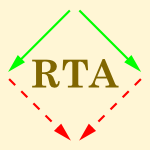194 papers:
 CASE-2015-JungLB #navigation
CASE-2015-JungLB #navigation- Close-range vision navigation and guidance for rotary UAV autonomous landing (YJ, DL, HB), pp. 342–347.
 DAC-2015-Pomeranz #generative #testing
DAC-2015-Pomeranz #generative #testing- Generation of close-to-functional broadside tests with equal primary input vectors (IP), p. 6.
 DATE-2015-MineoRPACM #architecture #energy #performance #self
DATE-2015-MineoRPACM #architecture #energy #performance #self- A closed loop transmitting power self-calibration scheme for energy efficient WiNoC architectures (AM, MSR, MP, GA, VC, MNM), pp. 513–518.
 LATA-2015-BadkobehFL #on the #word
LATA-2015-BadkobehFL #on the #word- On the Number of Closed Factors in a Word (GB, GF, ZL), pp. 381–390.
 CHI-2015-EslamiRVAVKHS #algorithm #quote #reasoning
CHI-2015-EslamiRVAVKHS #algorithm #quote #reasoning- “I always assumed that I wasn’t really that close to [her]”: Reasoning about Invisible Algorithms in News Feeds (ME, AR, KV, AA, AV, KK, KH, CS), pp. 153–162.
 DUXU-UI-2015-LimW #challenge #gender
DUXU-UI-2015-LimW #challenge #gender- Closing the Gender Divide in Tech: Challenges and Achievements in Vogue (LL, Y(W), pp. 224–231.
 HCI-DE-2015-Kelly #experience #interactive
HCI-DE-2015-Kelly #experience #interactive- Interactions in Affective Computing: Sharing a Haptic Experience Increases Calmness and Closeness (NK), pp. 477–488.
 KDD-2015-GaoJOW
KDD-2015-GaoJOW- Selective Hashing: Closing the Gap between Radius Search and k-NN Search (JG, HVJ, BCO, SW), pp. 349–358.
 TLCA-2015-CastellanCD #similarity
TLCA-2015-CastellanCD #similarity- Undecidability of Equality in the Free Locally Cartesian Closed Category (SC, PC, PD), pp. 138–152.
 CASE-2014-LasotaRS #industrial #interactive #standard #towards
CASE-2014-LasotaRS #industrial #interactive #standard #towards- Toward safe close-proximity human-robot interaction with standard industrial robots (PAL, GFR, JAS), pp. 339–344.
 ICALP-v1-2014-FouqueT #generative #random
ICALP-v1-2014-FouqueT #generative #random- Close to Uniform Prime Number Generation with Fewer Random Bits (PAF, MT), pp. 991–1002.
 ILC-2014-PetersenGAD
ILC-2014-PetersenGAD- A Scheme-Based Closed-Loop Anesthesia System (CLP, MG, JMA, GAD), p. 40.
 ICEIS-v3-2014-OrdonezCCWT #collaboration #evaluation #modelling #process #repository
ICEIS-v3-2014-OrdonezCCWT #collaboration #evaluation #modelling #process #repository- Collaborative Evaluation to Build Closed Repositories on Business Process Models (HO, JCC, CC, LKW, LHT), pp. 311–318.
 SEKE-2014-MaranAO #database #ontology #question #ubiquitous
SEKE-2014-MaranAO #database #ontology #question #ubiquitous- Are The Integrations Between Ontologies and Databases Really Opening the Closed World in Ubiquitous Computing ? (VM, IA, JPMdO), pp. 453–458.
 POPL-2014-EisenbergVJW #equation #product line
POPL-2014-EisenbergVJW #equation #product line- Closed type families with overlapping equations (RAE, DV, SLPJ, SW), pp. 671–684.
 CASE-2013-0011ZD #petri net #robust #specification
CASE-2013-0011ZD #petri net #robust #specification- Exploiting robustness in Petri net-based closed-loop systems to accommodate control specification changes (JL, MZ, XD), pp. 71–76.
 DATE-2013-ElfadelMA #formal method #industrial #manycore
DATE-2013-ElfadelMA #formal method #industrial #manycore- Closed-loop control for power and thermal management in multi-core processors: formal methods and industrial practice (IME, RM, DA), pp. 1879–1881.
 HT-2013-GuerreiroG #exclamation #quote #what
HT-2013-GuerreiroG #exclamation #quote #what- “Tell me what I want to know!”: the effect of relationship closeness on the relevance of profile attributes (JG, DG), pp. 230–235.
 CHI-2013-CuiKHG #mobile #video
CHI-2013-CuiKHG #mobile #video- Front-camera video recordings as emotion responses to mobile photos shared within close-knit groups (YC, JK, JH, GG), pp. 981–990.
 ICEIS-v3-2013-HarbuschP #exclamation #smarttech #usability #user interface
ICEIS-v3-2013-HarbuschP #exclamation #smarttech #usability #user interface- The User Interface of a Medical First Aid Application — A Close-to-Realistic Usability Study with the Smartphone Application “Defi Now!” (KH, JP), pp. 91–98.
 SIGIR-2013-CastilloMS #online #web
SIGIR-2013-CastilloMS #online #web- Online matching of web content to closed captions in IntoNow (CC, GDFM, AS), pp. 1115–1116.
 CADE-2013-MouraP
CADE-2013-MouraP- Computation in Real Closed Infinitesimal and Transcendental Extensions of the Rationals (LMdM, GOP), pp. 178–192.
 LICS-2013-EickmeyerKK #first-order #graph #invariant #logic #model checking
LICS-2013-EickmeyerKK #first-order #graph #invariant #logic #model checking- Model Checking for Successor-Invariant First-Order Logic on Minor-Closed Graph Classes (KE, KiK, SK), pp. 134–142.
 DATE-2012-ShoaibMGM #monitoring
DATE-2012-ShoaibMGM #monitoring- A closed-loop system for artifact mitigation in ambulatory electrocardiogram monitoring (MS, GM, HG, SM), pp. 431–436.
 SCAM-2012-Vidal #execution #symbolic computation #termination #verification
SCAM-2012-Vidal #execution #symbolic computation #termination #verification- Closed Symbolic Execution for Verifying Program Termination (GV), pp. 34–43.
 ICALP-v1-2012-ChekuriEV #design #graph #network #product line
ICALP-v1-2012-ChekuriEV #design #graph #network #product line- Node-Weighted Network Design in Planar and Minor-Closed Families of Graphs (CC, AE, AV), pp. 206–217.
 IFM-2012-BlackmoreHBER #automation #generative #simulation #verification
IFM-2012-BlackmoreHBER #automation #generative #simulation #verification- Analysing and Closing Simulation Coverage by Automatic Generation and Verification of Formal Properties from Coverage Reports (TB, DH, PB, KE, NR), pp. 84–98.
 SEFM-2012-BicknellRBCS #approach #using #verification
SEFM-2012-BicknellRBCS #approach #using #verification- A Practical Approach for Closed Systems Formal Verification Using Event-B (BB, JR, MJB, JC, CFS), pp. 323–332.
 CHI-2012-InkpenDRHJ #video
CHI-2012-InkpenDRHJ #video- Video kids: augmenting close friendships with asynchronous video conversations in videopal (KI, HD, AR, AH, PJ), pp. 2387–2396.
 CHI-2012-MalheirosJPBS #case study #effectiveness #personalisation
CHI-2012-MalheirosJPBS #case study #effectiveness #personalisation- Too close for comfort: a study of the effectiveness and acceptability of rich-media personalized advertising (MM, CJ, SP, SB, MAS), pp. 579–588.
 ICPR-2012-Nielsen #statistics
ICPR-2012-Nielsen #statistics- Closed-form information-theoretic divergences for statistical mixtures (FN), pp. 1723–1726.
 SEKE-2012-NarataM #linear
SEKE-2012-NarataM #linear- Managing Linear Hash in a Closed Space (SN, TM), pp. 741–746.
 CASE-2011-HaoD #incremental #optimisation #using
CASE-2011-HaoD #incremental #optimisation #using- Optimization of tool trajectory for Incremental Sheet Forming using closed loop control (WH, SD), pp. 779–784.
 CASE-2011-MettaB #design
CASE-2011-MettaB #design- Optimized closed-loop supply chain configuration selection for sustainable product designs (HM, FB), pp. 438–443.
 DAC-2011-FuketaIYTNSS #logic
DAC-2011-FuketaIYTNSS #logic- A closed-form expression for estimating minimum operating voltage (VDDmin) of CMOS logic gates (HF, SI, TY, MT, MN, HS, TS), pp. 984–989.
 CIAA-J-2010-Dangalchev11
CIAA-J-2010-Dangalchev11- Residual Closeness and Generalized Closeness (CD), pp. 1939–1948.
 DLT-2011-BrzozowskiY #complexity
DLT-2011-BrzozowskiY #complexity- Syntactic Complexity of Ideal and Closed Languages (JAB, YY), pp. 117–128.
 HCI-ITE-2011-TakahashiK
HCI-ITE-2011-TakahashiK- Eye-Movement-Based Instantaneous Cognition Model for Non-verbal Smooth Closed Figures (YT, SK), pp. 314–322.
 CIKM-2011-ElsayedLM #approximate #performance #retrieval
CIKM-2011-ElsayedLM #approximate #performance #retrieval- When close enough is good enough: approximate positional indexes for efficient ranked retrieval (TE, JJL, DM), pp. 1993–1996.
 KDD-2011-BifetHPG #data type #evolution #graph #mining
KDD-2011-BifetHPG #data type #evolution #graph #mining- Mining frequent closed graphs on evolving data streams (AB, GH, BP, RG), pp. 591–599.
 KDD-2011-TattiC #mining
KDD-2011-TattiC #mining- Mining closed episodes with simultaneous events (NT, BC), pp. 1172–1180.
 SIGIR-2011-StuparM #named
SIGIR-2011-StuparM #named- Picasso — to sing, you must close your eyes and draw (AS, SM), pp. 715–724.
 SAC-2011-DumasDBB #partial order #verification
SAC-2011-DumasDBB #partial order #verification- Application of partial-order methods for the verification of closed-loop SDL systems (XD, PD, FB, EB), pp. 1666–1673.
 SAT-2011-AbioDNS
SAT-2011-AbioDNS- Reducing Chaos in SAT-Like Search: Finding Solutions Close to a Given One (IA, MD, RN, PJS), pp. 273–286.
 TLCA-2011-ClairambaultD #category theory
TLCA-2011-ClairambaultD #category theory- The Biequivalence of Locally Cartesian Closed Categories and Martin-Löf Type Theories (PC, PD), pp. 91–106.
 ASE-2010-KessentiniVS #identification #risk management
ASE-2010-KessentiniVS #identification #risk management- Deviance from perfection is a better criterion than closeness to evil when identifying risky code (MK, SV, HAS), pp. 113–122.
 CASE-2010-HuSF #analysis #biology #using
CASE-2010-HuSF #analysis #biology #using- Dynamics analysis and closed-loop control of biological cells in transportation using robotic manipulation system with optical tweezers (SH, DS, GF), pp. 240–245.
 DAC-2010-JoshiSTASB #modelling
DAC-2010-JoshiSTASB #modelling- Closed-form modeling of layout-dependent mechanical stress (VJ, VS, AT, KA, DS, DB), pp. 673–678.
 DATE-2010-MischkallaH0 #modelling #simulation #synthesis #uml
DATE-2010-MischkallaH0 #modelling #simulation #synthesis #uml- Closing the gap between UML-based modeling, simulation and synthesis of combined HW/SW systems (FM, DH, WM), pp. 1201–1206.
 VLDB-2010-RaissiPK
VLDB-2010-RaissiPK- Computing Closed Skycubes (CR, JP, TK), pp. 838–847.
 CHI-2010-WuDM #detection #enterprise #network #social #using
CHI-2010-WuDM #detection #enterprise #network #social #using- Detecting professional versus personal closeness using an enterprise social network site (AW, JMD, DRM), pp. 1955–1964.
 CSCW-2010-KirkSC #communication #video
CSCW-2010-KirkSC #communication #video- Home video communication: mediating “closeness” (DSK, AS, XC), pp. 135–144.
 CAiSE-2010-LagunaMC #case study #modelling #on the #question #semantics
CAiSE-2010-LagunaMC #case study #modelling #on the #question #semantics- On the Semantics of the Extend Relationship in Use Case Models: Open-Closed Principle or Clairvoyance? (MAL, JMM, YC), pp. 409–423.
 KR-2010-Thielscher #calculus
KR-2010-Thielscher #calculus- Integrating Action Calculi and AgentSpeak: Closing the Gap (MT).
 SIGIR-2010-CaiZDC #algorithm #similarity
SIGIR-2010-CaiZDC #algorithm #similarity- Closed form solution of similarity algorithms (YC, MZ, CHQD, SC), pp. 709–710.
 ICLP-J-2010-SlotaL #reasoning #towards
ICLP-J-2010-SlotaL #reasoning #towards- Towards closed world reasoning in dynamic open worlds (MS, JL), pp. 547–563.
 RTA-2010-AvanziniM #complexity #runtime
RTA-2010-AvanziniM #complexity #runtime- Closing the Gap Between Runtime Complexity and Polytime Computability (MA, GM), pp. 33–48.
 CASE-2009-AllenGT #logic #nondeterminism #verification
CASE-2009-AllenGT #logic #nondeterminism #verification- Closed-loop determinism for non-deterministic environments: Verification for IEC 61499 logic controllers (LVA, KMG, DMT), pp. 1–6.
 CASE-2009-LiZF #analysis
CASE-2009-LiZF #analysis- Analysis of two-loop closed production systems (NL, LZ, WF), pp. 460–465.
 CIAA-J-2008-TsayW09 #automation #composition #reasoning
CIAA-J-2008-TsayW09 #automation #composition #reasoning- Automated Compositional Reasoning of Intuitionistically Closed Regular Properties (YKT, BYW), pp. 747–762.
 LATA-2009-Akama #commutative #learning
LATA-2009-Akama #commutative #learning- Commutative Regular Shuffle Closed Languages, Noetherian Property, and Learning Theory (YA), pp. 93–104.
 ICFP-2009-FlattBF #ad hoc #documentation #named #tool support
ICFP-2009-FlattBF #ad hoc #documentation #named #tool support- Scribble: closing the book on ad hoc documentation tools (MF, EB, RBF), pp. 109–120.
 OCSC-2009-OlssonTWVL #case study #community #interactive
OCSC-2009-OlssonTWVL #case study #community #interactive- Collective Content as a Facilitator of Community Interaction: A User Study of Four Close-Knit Communities (TO, HT, MW, KVVM, JL), pp. 246–255.
 RecSys-2009-WedelRC #personalisation #recommendation
RecSys-2009-WedelRC #personalisation #recommendation- Up close and personalized: a marketing view of recommendation systems (MW, RTR, TSC), pp. 3–4.
 SAC-2009-HoerstingBD #image #visual notation
SAC-2009-HoerstingBD #image #visual notation- Visual loop-closing with image profiles (HH, LB, ZD), pp. 1166–1170.
 SAC-2009-SchryenK #open source #security #towards
SAC-2009-SchryenK #open source #security #towards- Open source vs. closed source software: towards measuring security (GS, RK), pp. 2016–2023.
 SLE-2009-HeidenreichJSW #java #modelling
SLE-2009-HeidenreichJSW #java #modelling- Closing the Gap between Modelling and Java (FH, JJ, MS, CW), pp. 374–383.
 CASE-2008-AhmadVB #design
CASE-2008-AhmadVB #design- Controller design for a closed-loop scanning tunneling microscope (IA, AV, GB), pp. 971–976.
 CASE-2008-BillerMMZ #modelling #reliability
CASE-2008-BillerMMZ #modelling #reliability- Closed production lines with arbitrary models of machine reliability (SB, SPM, SMM, LZ), pp. 466–471.
 PODS-2008-LibkinS
PODS-2008-LibkinS- Data exchange and schema mappings in open and closed worlds (LL, CS), pp. 139–148.
 VLDB-2008-LeeZ #query
VLDB-2008-LeeZ #query- Closing the query processing loop in Oracle 11g (AWL, MZ), pp. 1368–1378.
 PEPM-2008-KameyamaKS #staged
PEPM-2008-KameyamaKS #staged- Closing the stage: from staged code to typed closures (YK, OK, CcS), pp. 147–157.
 STOC-2008-BenjaminiSS #graph
STOC-2008-BenjaminiSS #graph- Every minor-closed property of sparse graphs is testable (IB, OS, AS), pp. 393–402.
 CIAA-2008-TsayW #automation #composition #reasoning
CIAA-2008-TsayW #automation #composition #reasoning- Automated Compositional Reasoning of Intuitionistically Closed Regular Properties (YKT, BYW), pp. 36–45.
 ICALP-A-2008-Ruzic #performance #sorting
ICALP-A-2008-Ruzic #performance #sorting- Constructing Efficient Dictionaries in Close to Sorting Time (MR), pp. 84–95.
 IFL-2008-Mackie #implementation #interactive #reduction
IFL-2008-Mackie #implementation #interactive #reduction- An Interaction Net Implementation of Closed Reduction (IM), pp. 43–59.
 ICEIS-AIDSS-2008-Zacharias
ICEIS-AIDSS-2008-Zacharias- Rules as Simple Way to Model Knowledge — Closing the Gap between Promise and Reality (VZ), pp. 87–94.
 ICEIS-DISI-2008-MangisengiH #framework #towards
ICEIS-DISI-2008-MangisengiH #framework #towards- Towards a Closed-Loop Business Intelligence Framework (OM, NTH), pp. 210–217.
 CIKM-2008-YangCNZW #comprehension
CIKM-2008-YangCNZW #comprehension- Closing the loop in webpage understanding (CY, YC, ZN, JZ, JRW), pp. 1397–1398.
 ICML-2008-RishGCPG #linear #modelling #reduction
ICML-2008-RishGCPG #linear #modelling #reduction- Closed-form supervised dimensionality reduction with generalized linear models (IR, GG, GAC, FP, GJG), pp. 832–839.
 ICPR-2008-LiuA #automation #recognition
ICPR-2008-LiuA #automation #recognition- Automatic eye state recognition and closed-eye photo correction (ZL, HA), pp. 1–4.
 KDD-2008-BifetG #adaptation #data type #mining
KDD-2008-BifetG #adaptation #data type #mining- Mining adaptively frequent closed unlabeled rooted trees in data streams (AB, RG), pp. 34–42.
 CASE-2007-LiZL #multi
CASE-2007-LiZL #multi- Semiconductor system with multiple closed-loops constrains (NL, LZ, QLL), pp. 484–488.
 CHI-2007-BentleyM #product line
CHI-2007-BentleyM #product line- Sharing motion information with close family and friends (FB, CJM), pp. 1361–1370.
 HIMI-IIE-2007-AkessonE #how #question #ubiquitous
HIMI-IIE-2007-AkessonE #how #question #ubiquitous- The Vision of Ubiquitous Media Services: How Close Are We? (MÅ, CIE), pp. 222–232.
 KDD-2007-FriedlandJ #identification
KDD-2007-FriedlandJ #identification- Finding tribes: identifying close-knit individuals from employment patterns (LF, DJ), pp. 290–299.
 VLDB-2006-JiTT #3d #dataset #mining
VLDB-2006-JiTT #3d #dataset #mining- Mining Frequent Closed Cubes in 3D Datasets (LJ, KLT, AKHT), pp. 811–822.
 ITiCSE-2006-Soh #implementation
ITiCSE-2006-Soh #implementation- Implementing the jigsaw model in CS1 closed labs (LKS), pp. 163–167.
 STOC-2006-KawarabayashiM #approximate #graph
STOC-2006-KawarabayashiM #approximate #graph- Approximating the list-chromatic number and the chromatic number in minor-closed and odd-minor-closed classes of graphs (KiK, BM), pp. 401–416.
 ICALP-v1-2006-Kapoutsis
ICALP-v1-2006-Kapoutsis- Small Sweeping 2NFAs Are Not Closed Under Complement (CAK), pp. 144–156.
 ICPR-v1-2006-QiuGDC #image #optimisation #using
ICPR-v1-2006-QiuGDC #image #optimisation #using- Tone Mapping for HDR Image using Optimization A New Closed Form Solution (GQ, JG, JD, MC), pp. 996–999.
 ICPR-v2-2006-BourgeoisND #visual notation
ICPR-v2-2006-BourgeoisND #visual notation- Coarse Visual Registration from Closed-Contour Neighborhood Descriptor (SB, SNC, MD), pp. 283–287.
 KDD-2006-JiangG #data type #mining #named
KDD-2006-JiangG #data type #mining #named- CFI-Stream: mining closed frequent itemsets in data streams (NJ, LG), pp. 592–597.
 KDD-2006-ZengWZK #clique #database #graph #scalability
KDD-2006-ZengWZK #clique #database #graph #scalability- Coherent closed quasi-clique discovery from large dense graph databases (ZZ, JW, LZ, GK), pp. 797–802.
 ECOOP-2006-Johnson
ECOOP-2006-Johnson- The Closing of the Frontier (REJ), p. 379.
 HPCA-2006-Recio #evolution #industrial #network
HPCA-2006-Recio #evolution #industrial #network- Industrial Perspectives: System IO Network Evolution — Closing Requirement Gaps (RR), p. 201.
 CSL-2006-Chatterjee06a #equilibrium #nash
CSL-2006-Chatterjee06a #equilibrium #nash- Nash Equilibrium for Upward-Closed Objectives (KC), pp. 271–286.
 DAC-2005-ChinneryK #perspective
DAC-2005-ChinneryK #perspective- Closing the power gap between ASIC and custom: an ASIC perspective (DGC, KK), pp. 275–280.
 DATE-2005-MilevB #analysis
DATE-2005-MilevB #analysis- A Tool and Methodology for AC-Stability Analysis of Continuous-Time Closed-Loop Systems (MM, RB), pp. 204–208.
 ITiCSE-2005-SohSPNL #process
ITiCSE-2005-SohSPNL #process- Analyzing relationships between closed labs and course activities in CS1 (LKS, AS, SP, GN, JL), pp. 183–187.
 ESOP-2005-MakholmW #calculus #mobile #polymorphism #process #reduction #type system
ESOP-2005-MakholmW #calculus #mobile #polymorphism #process #reduction #type system- Instant Polymorphic Type Systems for Mobile Process Calculi: Just Add Reduction Rules and Close (HM, JBW), pp. 389–407.
 CIKM-2005-Ioannidis #data transformation
CIKM-2005-Ioannidis #data transformation- Emerging data management systems: close-up and personal (YEI), p. 2.
 ICML-2005-GeurtsW #modelling
ICML-2005-GeurtsW #modelling- Closed-form dual perturb and combine for tree-based models (PG, LW), pp. 233–240.
 KDD-2005-CongHP #mining #parallel
KDD-2005-CongHP #mining #parallel- Parallel mining of closed sequential patterns (SC, JH, DAP), pp. 562–567.
 KDD-2005-YanZH #constraints #graph #mining #relational
KDD-2005-YanZH #constraints #graph #mining #relational- Mining closed relational graphs with connectivity constraints (XY, XJZ, JH), pp. 324–333.
 ICSE-2005-ShawHO #design #education #re-engineering #what
ICSE-2005-ShawHO #design #education #re-engineering #what- Deciding what to design: closing a gap in software engineering education (MS, JDH, IO), pp. 607–608.
 RTA-2005-Dershowitz
RTA-2005-Dershowitz- Open. Closed. Open (ND), pp. 376–393.
 DAC-2004-TanjiA #analysis #distributed
DAC-2004-TanjiA #analysis #distributed- Closed-form expressions of distributed RLC interconnects for analysis of on-chip inductance effects (YT, HA), pp. 810–813.
 SAS-2004-Schmidt #approximate #logic
SAS-2004-Schmidt #approximate #logic- Closed and Logical Relations for Over- and Under-Approximation of Powersets (DAS), pp. 22–37.
 ICGT-2004-Casas-GarrigaB #partial order
ICGT-2004-Casas-GarrigaB #partial order- Coproduct Transformations on Lattices of Closed Partial Orders (GCG, JLB), pp. 336–351.
 ICEIS-v3-2004-PotdarC #open source
ICEIS-v3-2004-PotdarC #open source- Open Source vs. Closed Source (VP, EC), pp. 609–613.
 ICPR-v3-2004-CastelanH #constraints #fourier
ICPR-v3-2004-CastelanH #constraints #fourier- Combining Data-Closeness and Fourier Domain Integrability Constraints in Shape-from-Shading (MC, ERH), pp. 115–118.
 ICPR-v3-2004-IshiiO #3d #using
ICPR-v3-2004-IshiiO #3d #using- Perfect Perspective Projection using a Varifocal Mirror and Its Application to Three-Dimensional Close-Up Imaging (AI, RO), pp. 270–273.
 KDD-2004-GadeWK #constraints #mining #performance
KDD-2004-GadeWK #constraints #mining #performance- Efficient closed pattern mining in the presence of tough block constraints (KG, JW, GK), pp. 138–147.
 SEKE-2004-LiLCWL #using
SEKE-2004-LiLCWL #using- Extracting Minimal Non-Redundant Implication Rules by Using Quantized Closed Itemset Lattice (YL, ZL, WC, QW, WL), pp. 402–405.
 ICSE-2004-LeowKS #automation #generative #source code #specification #testing
ICSE-2004-LeowKS #automation #generative #source code #specification #testing- Automated Generation of Test Programs from Closed Specifications of Classes and Test Cases (WKL, SCK, YS), pp. 96–105.
 LICS-2004-OuaknineW #automaton #decidability #on the #problem
LICS-2004-OuaknineW #automaton #decidability #on the #problem- On the Language Inclusion Problem for Timed Automata: Closing a Decidability Gap (JO, JW), pp. 54–63.
 DAC-2003-LauP #algorithm #design #using
DAC-2003-LauP #algorithm #design #using- Fractional-N frequency synthesizer design at the transfer function level using a direct closed loop realization algorithm (CYL, MHP), pp. 526–531.
 DATE-2003-BurbidgeTR #automation #embedded #monitoring
DATE-2003-BurbidgeTR #automation #embedded #monitoring- Techniques for Automatic On Chip Closed Loop Transfer Function Monitoring For Embedded Charge Pump Phase Locked Loops (MJB, JT, AR), pp. 10496–10503.
 ITiCSE-2003-Leska #java #learning #user interface #using
ITiCSE-2003-Leska #java #learning #user interface #using- Learning to develop GUIs in Java using closed labs (CL), p. 228.
 ICEIS-v3-2003-SerraoNT #analysis #open source #operating system #security
ICEIS-v3-2003-SerraoNT #analysis #open source #operating system #security- Open Source Security Analysis — Evaluating Security of Open Source vs. Closed Source Operating Systems (CS, DN, PT), pp. 433–440.
 KDD-2003-PanCTYZ #biology #dataset #named
KDD-2003-PanCTYZ #biology #dataset #named- Carpenter: finding closed patterns in long biological datasets (FP, GC, AKHT, JY, MJZ), pp. 637–642.
 KDD-2003-WangHP #mining
KDD-2003-WangHP #mining- CLOSET+: searching for the best strategies for mining frequent closed itemsets (JW, JH, JP), pp. 236–245.
 KDD-2003-YanH #graph #mining #named
KDD-2003-YanH #graph #mining #named- CloseGraph: mining closed frequent graph patterns (XY, JH), pp. 286–295.
 SAC-2003-JiaPP #constraints #mining
SAC-2003-JiaPP #constraints #mining- Tough Constraint-Based Frequent Closed Itemsets Mining (LJ, RP, DP), pp. 416–420.
 CSL-2003-Vorobjov03a #effectiveness #quantifier #tutorial
CSL-2003-Vorobjov03a #effectiveness #quantifier #tutorial- Effective Quantifier Elimination over Real Closed Fields (Tutorial) (NV), p. 545.
 LICS-2003-FederV #morphism
LICS-2003-FederV #morphism- Homomorphism Closed vs. Existential Positive (TF, MYV), pp. 311–320.
 RTA-2003-OhsakiST
RTA-2003-OhsakiST- Recognizing Boolean Closed A-Tree Languages with Membership Conditional Rewriting Mechanism (HO, HS, TT), pp. 483–498.
 DAC-2002-Roychowdhury
DAC-2002-Roychowdhury- A time-domain RF steady-state method for closely spaced tones (JSR), pp. 510–513.
 DATE-2002-ChenM #design #metric #physics
DATE-2002-ChenM #design #metric #physics- Closed-Form Crosstalk Noise Metrics for Physical Design Applications (LHC, MMS), pp. 812–819.
 SAS-2002-BagnaraRZH #library
SAS-2002-BagnaraRZH #library- Possibly Not Closed Convex Polyhedra and the Parma Polyhedra Library (RB, ER, EZ, PMH), pp. 213–229.
 ICALP-2002-Merkle #probability #sequence
ICALP-2002-Merkle #probability #sequence- The Kolmogorov-Loveland Stochastic Sequences Are Not Closed under Selecting Subsequences (WM), pp. 390–400.
 FME-2002-IoustinovaSS #model checking
FME-2002-IoustinovaSS #model checking- Closing Open SDL-Systems for Model Checking with DTSpin (NI, NS, MS), pp. 531–548.
 AdaEurope-2002-Amey #analysis #design
AdaEurope-2002-Amey #analysis #design- Closing the Loop: The Influence of Code Analysis on Design (PA), pp. 151–162.
 ICPR-v1-2002-CamusW #image #performance #reliability
ICPR-v1-2002-CamusW #image #performance #reliability- Reliable and Fast Eye Finding in Close-up Images (TAC, RPW), pp. 389–394.
 VMCAI-2002-SidorovaS #model checking
VMCAI-2002-SidorovaS #model checking- Synchronous Closing of Timed SDL Systems for Model Checking (NS, MS), pp. 79–93.
 ICLP-2001-Ueda #concurrent #constraints
ICLP-2001-Ueda #concurrent #constraints- A Close Look at Constraint-Based Concurrency (KU), p. 9.
 LICS-2001-ArnoldLM #infinity #monad
LICS-2001-ArnoldLM #infinity #monad- The Hierarchy inside Closed Monadic Σ₁ Collapses on the Infinite Binary Tree (AA, GL, JM), pp. 157–166.
 LICS-2001-EscardoS
LICS-2001-EscardoS- A Universal Characterization of the Closed Euclidean Interval (MHE, AKS), pp. 115–125.
 SAT-2001-BuningZ #satisfiability
SAT-2001-BuningZ #satisfiability- Satisfiable Formulas Closed Under Replacement (HKB, XZ), pp. 48–58.
 DAC-2000-ChinneyK #perspective
DAC-2000-ChinneyK #perspective- Closing the gap between ASIC and custom: an ASIC perspective (DGC, KK), pp. 637–642.
 DAC-2000-SaabHK
DAC-2000-SaabHK- Closing the gap between analog and digital (KS, NBH, BK), pp. 774–779.
 TACAS-2000-DelzannoR #representation #set
TACAS-2000-DelzannoR #representation #set- Symbolic Representation of Upward-Closed Sets (GD, JFR), pp. 426–440.
 ICALP-2000-CalcagnoMT #approach #imperative #multi #programming
ICALP-2000-CalcagnoMT #approach #imperative #multi #programming- Closed Types as a Simple Approach to Safe Imperative Multi-stage Programming (CC, EM, WT), pp. 25–36.
 CHI-2000-PauwsBE #music #programming
CHI-2000-PauwsBE #music #programming- Programming and enjoying music with your eyes closed (SP, DB, BE), pp. 376–383.
 ICPR-v1-2000-GrossmannV #re-engineering
ICPR-v1-2000-GrossmannV #re-engineering- A Closed-Form Solution for Paraperspective Reconstruction (EG, JSV), pp. 1864–1867.
 KR-2000-HaarslevM #reasoning #strict #transitive
KR-2000-HaarslevM #reasoning #strict #transitive- Expressive ABox Reasoning with Number Restrictions, Role Hierarchies, and Transitively Closed Roles (VH, RM), pp. 273–284.
 SAIG-2000-Kieburtz #domain-specific language #implementation
SAIG-2000-Kieburtz #domain-specific language #implementation- Implementing Closed Domain-Specific Languages (RBK), pp. 1–2.
 ASPLOS-2000-GibsonKOH #simulation
ASPLOS-2000-GibsonKOH #simulation- FLASH vs. (Simulated) FLASH: Closing the Simulation Loop (JG, RK, DO, MH), pp. 49–58.
 CL-2000-BastidePTSL #mining #using
CL-2000-BastidePTSL #mining #using- Mining Minimal Non-redundant Association Rules Using Frequent Closed Itemsets (YB, NP, RT, GS, LL), pp. 972–986.
 ITiCSE-1999-MutchlerAKLOSY #interactive #multi
ITiCSE-1999-MutchlerAKLOSY #interactive #multi- CS 1 closed laboratories = multimedia materials + human interaction (DM, CA, AK, CL, DO, RS, FHY), p. 210.
 ICALP-1999-PowerT
ICALP-1999-PowerT- Closed Freyd- and κ-categories (JP, HT), pp. 625–634.
 FM-v1-1999-Kurki-Suonio #component #interface #refinement #specification
FM-v1-1999-Kurki-Suonio #component #interface #refinement #specification- Component and Interface Refinement in Closed-System Specifications (RKS), pp. 134–154.
 SIGAda-1999-Wang #ada #approach #re-engineering
SIGAda-1999-Wang #ada #approach #re-engineering- Integrating a software engineering approach into an Ada closed laboratory (MW), pp. 163–168.
 UML-1999-GieseGW #behaviour #modelling #object-oriented
UML-1999-GieseGW #behaviour #modelling #object-oriented- Closing the Gap Between Object-Oriented Modeling of Structure and Behavior (HG, JG, GW), pp. 534–549.
 CSL-1999-FernandezM #reduction #λ-calculus
CSL-1999-FernandezM #reduction #λ-calculus- Closed Reductions in the λ-Calculus (MF, IM), pp. 220–234.
 LICS-1999-BruniM #category theory #π-calculus
LICS-1999-BruniM #category theory #π-calculus- Cartesian Closed Double Categories, Their λ-Notation, and the π-Calculus (RB, UM), pp. 246–265.
 PLDI-1998-ColbyGJ #automation #source code
PLDI-1998-ColbyGJ #automation #source code- Automatically Closing Open Reactive Programs (CC, PG, LJJ), pp. 345–357.
 FM-1998-MeulenC #formal method #specification
FM-1998-MeulenC #formal method #specification- Formal Methods in the Specification of the Emergency Closing System of the Eastern Scheldt Storm Surge Barrier (MvdM, TC), pp. 296–301.
 ITiCSE-1997-BeheshtiW
ITiCSE-1997-BeheshtiW- Instructional software for closed laboratories in CS1 (MB, BW), pp. 40–41.
 HCI-SEC-1997-SoFTSY #approach #case study #database #development #distributed
HCI-SEC-1997-SoFTSY #approach #case study #database #development #distributed- A Closed-Loop Approach for Integrating Human Factors into Systems Development: A Case Study Involving a Distributed Database System (RHYS, CMF, MMT, CJS, BPY), pp. 517–520.
 RTA-1997-OyamaguchiO #linear #parallel #term rewriting
RTA-1997-OyamaguchiO #linear #parallel #term rewriting- A New Parallel Closed Condition for Church-Rossser of Left-Linear Term Rewriting Systems (MO, YO), pp. 187–201.
 ITiCSE-1996-LinWC #concept #development
ITiCSE-1996-LinWC #concept #development- Critical concepts in the development of courseware for CS closed laboratories (JMCL, CCW, GFC), pp. 14–19.
 ITiCSE-1996-Prey #education #learning
ITiCSE-1996-Prey #education #learning- Cooperative learning and closed laboratories in an undergraduate computer science curriculum (JCP), pp. 23–24.
 ICPR-1996-Floreby #algorithm #image #multi #sequence
ICPR-1996-Floreby #algorithm #image #multi #sequence- A multiscale algorithm for closed contour matching in image sequence (LF), pp. 884–888.
 ICPR-1996-KanungoH #approach #automation #documentation #generative
ICPR-1996-KanungoH #approach #automation #documentation #generative- Automatic generation of character groundtruth for scanned documents: a closed-loop approach (TK, RMH), pp. 669–675.
 ICPR-1996-LinLC #3d #modelling #using
ICPR-1996-LinLC #3d #modelling #using- Recovery of 3-D closed surfaces using progressive shell models (RL, WCL, CTC), pp. 95–99.
 ICPR-1996-PengB #learning #recognition
ICPR-1996-PengB #learning #recognition- Delayed reinforcement learning for closed-loop object recognition (JP, BB), pp. 310–314.
 ICDAR-v2-1995-ChenHP #documentation #image #recursion #segmentation #using #word
ICDAR-v2-1995-ChenHP #documentation #image #recursion #segmentation #using #word- Simultaneous word segmentation from document images using recursive morphological closing transform (SSC, RMH, ITP), pp. 761–764.
 STOC-1995-NisanT #symmetry
STOC-1995-NisanT #symmetry- Symmetric logspace is closed under complement (NN, ATS), pp. 140–146.
 TAGT-1994-CourcelleS #graph #set
TAGT-1994-CourcelleS #graph #set- The Obstructions of a Minor-Closed Set of Graphs Defined by Hyperedge Replacement can be Constructed (BC, GS), pp. 351–367.
 KR-1994-EtzioniGW #reasoning
KR-1994-EtzioniGW #reasoning- Tractable Closed World Reasoning with Updates (OE, KG, DSW), pp. 178–189.
 ICALP-1993-Gupta #automaton #finite #product line
ICALP-1993-Gupta #automaton #finite #product line- Finite Automata as Characterizations of Minor Closed Tree Families (Extended Abstract) (AG), pp. 359–370.
 SEKE-1993-Georges #information management
SEKE-1993-Georges #information management- Closing the Knowledge Engineering Gap (MG), pp. 174–182.
 TOOLS-USA-1992-Odberg #database #object-oriented #query #what
TOOLS-USA-1992-Odberg #database #object-oriented #query #what- What “What” is and isn’t: On Query Languages for Object-Oriented Databases, or: Closing the Gap — Again (EO), pp. 13–24.
 ASPLOS-1992-KubiatowiczCA #memory management #multi #transaction
ASPLOS-1992-KubiatowiczCA #memory management #multi #transaction- Closing the Window of Vulnerability in Multiphase Memory Transactions (JK, DC, AA), pp. 274–284.
 LICS-1992-Saraswat #constraints
LICS-1992-Saraswat #constraints- The Category of Constraint Systems is Cartesian-Closed (VAS), pp. 341–345.
 STOC-1991-BeigelRS
STOC-1991-BeigelRS- PP Is Closed Under Intersection (Extended Abstract) (RB, NR, DAS), pp. 1–9.
 STOC-1990-SchmidtS #analysis
STOC-1990-SchmidtS #analysis- The Analysis of Closed Hashing under Limited Randomness (Extended Abstract) (JPS, AS), pp. 224–234.
 STOC-1989-Ierardi #algebra #formal method #quantifier
STOC-1989-Ierardi #algebra #formal method #quantifier- Quantifier Elimination in the Theory of an Algebraically-closed Field (DI), pp. 138–147.
 STOC-1989-SchmidtS #aspect-oriented #on the #performance
STOC-1989-SchmidtS #aspect-oriented #on the #performance- On Aspects of Universality and Performance for Closed Hashing (Extended Abstract) (JPS, AS), pp. 355–366.
 VLDB-1988-GottlobZ #database #null
VLDB-1988-GottlobZ #database #null- Closed World Databases Opened Through Null Values (GG, RZ), pp. 50–61.
 ICALP-1988-MehlhornY #how #theorem
ICALP-1988-MehlhornY #how #theorem- Constructive Hopf’s Theorem: Or How to Untangle Closed Planar Curves (KM, CKY), pp. 410–423.
 PODS-1986-GelfondPP #parallel
PODS-1986-GelfondPP #parallel- The Extended Closed World Assumpution and its Relationship to Parallel Circumscription (MG, HP, TCP), pp. 133–139.
 LICS-1986-Gunter #axiom
LICS-1986-Gunter #axiom- The Largest First-Order-Axiomatizable Cartesian Closed Category of Domains (CAG), pp. 142–148.
 SOSP-1985-KronenbergLS #clustering #distributed #named
SOSP-1985-KronenbergLS #clustering #distributed #named- VAXclusters: A Closely-Coupled Distributed System (Abstract) (NPK, HML, WDS), p. 1.
 ICALP-1984-IzumiIH #algebra #axiom #regular expression
ICALP-1984-IzumiIH #algebra #axiom #regular expression- A Complete Axiom System for Algebra of Closed-Regular Expression (HI, YI, NH), pp. 260–269.
 CADE-1982-Minker #database #on the
CADE-1982-Minker #database #on the- On Indefinite Databases and the Closed World Assumption (JM), pp. 292–308.
 STOC-1981-Simon #bound #complexity #probability #turing machine
STOC-1981-Simon #bound #complexity #probability #turing machine- Space-Bounded Probabilistic Turing Machine Complexity Classes Are Closed under Complement (Preliminary Version) (JS), pp. 158–167.
 DAC-1979-Sherwood #hybrid #logic #scheduling
DAC-1979-Sherwood #hybrid #logic #scheduling- A hybrid scheduling technique for hierarchical logic simulators or “Close Encounters of the Simulated Kind” (WS), pp. 249–254.
 ICALP-1977-Streinu #finite #ll
ICALP-1977-Streinu #finite #ll- LL(k) Languages are Closed Under Union with Finite Languages (IS), pp. 504–508.
 DAC-1976-PiscatelliT
DAC-1976-PiscatelliT- A solution to closeness checking of non-orthogonal printed circuit board wiring (RNP, PT), pp. 172–178.
 POPL-1973-Backus #programming language #semantics
POPL-1973-Backus #programming language #semantics- Programming Language Semantics and Closed Applicative Languages (JWB), pp. 71–86.
 STOC-1971-GinsburgG #recursion
STOC-1971-GinsburgG #recursion- Intersection-Closed full AFL and the Recursively Enumerable Languages (SG, JG), pp. 121–131.
 CASE-2015-JungLB #navigation
CASE-2015-JungLB #navigation DAC-2015-Pomeranz #generative #testing
DAC-2015-Pomeranz #generative #testing DATE-2015-MineoRPACM #architecture #energy #performance #self
DATE-2015-MineoRPACM #architecture #energy #performance #self LATA-2015-BadkobehFL #on the #word
LATA-2015-BadkobehFL #on the #word CHI-2015-EslamiRVAVKHS #algorithm #quote #reasoning
CHI-2015-EslamiRVAVKHS #algorithm #quote #reasoning DUXU-UI-2015-LimW #challenge #gender
DUXU-UI-2015-LimW #challenge #gender HCI-DE-2015-Kelly #experience #interactive
HCI-DE-2015-Kelly #experience #interactive KDD-2015-GaoJOW
KDD-2015-GaoJOW TLCA-2015-CastellanCD #similarity
TLCA-2015-CastellanCD #similarity CASE-2014-LasotaRS #industrial #interactive #standard #towards
CASE-2014-LasotaRS #industrial #interactive #standard #towards ICALP-v1-2014-FouqueT #generative #random
ICALP-v1-2014-FouqueT #generative #random ILC-2014-PetersenGAD
ILC-2014-PetersenGAD ICEIS-v3-2014-OrdonezCCWT #collaboration #evaluation #modelling #process #repository
ICEIS-v3-2014-OrdonezCCWT #collaboration #evaluation #modelling #process #repository SEKE-2014-MaranAO #database #ontology #question #ubiquitous
SEKE-2014-MaranAO #database #ontology #question #ubiquitous POPL-2014-EisenbergVJW #equation #product line
POPL-2014-EisenbergVJW #equation #product line CASE-2013-0011ZD #petri net #robust #specification
CASE-2013-0011ZD #petri net #robust #specification DATE-2013-ElfadelMA #formal method #industrial #manycore
DATE-2013-ElfadelMA #formal method #industrial #manycore HT-2013-GuerreiroG #exclamation #quote #what
HT-2013-GuerreiroG #exclamation #quote #what CHI-2013-CuiKHG #mobile #video
CHI-2013-CuiKHG #mobile #video ICEIS-v3-2013-HarbuschP #exclamation #smarttech #usability #user interface
ICEIS-v3-2013-HarbuschP #exclamation #smarttech #usability #user interface SIGIR-2013-CastilloMS #online #web
SIGIR-2013-CastilloMS #online #web CADE-2013-MouraP
CADE-2013-MouraP LICS-2013-EickmeyerKK #first-order #graph #invariant #logic #model checking
LICS-2013-EickmeyerKK #first-order #graph #invariant #logic #model checking DATE-2012-ShoaibMGM #monitoring
DATE-2012-ShoaibMGM #monitoring SCAM-2012-Vidal #execution #symbolic computation #termination #verification
SCAM-2012-Vidal #execution #symbolic computation #termination #verification ICALP-v1-2012-ChekuriEV #design #graph #network #product line
ICALP-v1-2012-ChekuriEV #design #graph #network #product line IFM-2012-BlackmoreHBER #automation #generative #simulation #verification
IFM-2012-BlackmoreHBER #automation #generative #simulation #verification SEFM-2012-BicknellRBCS #approach #using #verification
SEFM-2012-BicknellRBCS #approach #using #verification CHI-2012-InkpenDRHJ #video
CHI-2012-InkpenDRHJ #video CHI-2012-MalheirosJPBS #case study #effectiveness #personalisation
CHI-2012-MalheirosJPBS #case study #effectiveness #personalisation ICPR-2012-Nielsen #statistics
ICPR-2012-Nielsen #statistics SEKE-2012-NarataM #linear
SEKE-2012-NarataM #linear CASE-2011-HaoD #incremental #optimisation #using
CASE-2011-HaoD #incremental #optimisation #using CASE-2011-MettaB #design
CASE-2011-MettaB #design DAC-2011-FuketaIYTNSS #logic
DAC-2011-FuketaIYTNSS #logic CIAA-J-2010-Dangalchev11
CIAA-J-2010-Dangalchev11 DLT-2011-BrzozowskiY #complexity
DLT-2011-BrzozowskiY #complexity HCI-ITE-2011-TakahashiK
HCI-ITE-2011-TakahashiK CIKM-2011-ElsayedLM #approximate #performance #retrieval
CIKM-2011-ElsayedLM #approximate #performance #retrieval KDD-2011-BifetHPG #data type #evolution #graph #mining
KDD-2011-BifetHPG #data type #evolution #graph #mining KDD-2011-TattiC #mining
KDD-2011-TattiC #mining SIGIR-2011-StuparM #named
SIGIR-2011-StuparM #named SAC-2011-DumasDBB #partial order #verification
SAC-2011-DumasDBB #partial order #verification SAT-2011-AbioDNS
SAT-2011-AbioDNS TLCA-2011-ClairambaultD #category theory
TLCA-2011-ClairambaultD #category theory ASE-2010-KessentiniVS #identification #risk management
ASE-2010-KessentiniVS #identification #risk management CASE-2010-HuSF #analysis #biology #using
CASE-2010-HuSF #analysis #biology #using DAC-2010-JoshiSTASB #modelling
DAC-2010-JoshiSTASB #modelling DATE-2010-MischkallaH0 #modelling #simulation #synthesis #uml
DATE-2010-MischkallaH0 #modelling #simulation #synthesis #uml VLDB-2010-RaissiPK
VLDB-2010-RaissiPK CHI-2010-WuDM #detection #enterprise #network #social #using
CHI-2010-WuDM #detection #enterprise #network #social #using CSCW-2010-KirkSC #communication #video
CSCW-2010-KirkSC #communication #video CAiSE-2010-LagunaMC #case study #modelling #on the #question #semantics
CAiSE-2010-LagunaMC #case study #modelling #on the #question #semantics KR-2010-Thielscher #calculus
KR-2010-Thielscher #calculus SIGIR-2010-CaiZDC #algorithm #similarity
SIGIR-2010-CaiZDC #algorithm #similarity ICLP-J-2010-SlotaL #reasoning #towards
ICLP-J-2010-SlotaL #reasoning #towards RTA-2010-AvanziniM #complexity #runtime
RTA-2010-AvanziniM #complexity #runtime CASE-2009-AllenGT #logic #nondeterminism #verification
CASE-2009-AllenGT #logic #nondeterminism #verification CASE-2009-LiZF #analysis
CASE-2009-LiZF #analysis CIAA-J-2008-TsayW09 #automation #composition #reasoning
CIAA-J-2008-TsayW09 #automation #composition #reasoning LATA-2009-Akama #commutative #learning
LATA-2009-Akama #commutative #learning ICFP-2009-FlattBF #ad hoc #documentation #named #tool support
ICFP-2009-FlattBF #ad hoc #documentation #named #tool support OCSC-2009-OlssonTWVL #case study #community #interactive
OCSC-2009-OlssonTWVL #case study #community #interactive RecSys-2009-WedelRC #personalisation #recommendation
RecSys-2009-WedelRC #personalisation #recommendation SAC-2009-HoerstingBD #image #visual notation
SAC-2009-HoerstingBD #image #visual notation SAC-2009-SchryenK #open source #security #towards
SAC-2009-SchryenK #open source #security #towards SLE-2009-HeidenreichJSW #java #modelling
SLE-2009-HeidenreichJSW #java #modelling CASE-2008-AhmadVB #design
CASE-2008-AhmadVB #design CASE-2008-BillerMMZ #modelling #reliability
CASE-2008-BillerMMZ #modelling #reliability PODS-2008-LibkinS
PODS-2008-LibkinS VLDB-2008-LeeZ #query
VLDB-2008-LeeZ #query PEPM-2008-KameyamaKS #staged
PEPM-2008-KameyamaKS #staged STOC-2008-BenjaminiSS #graph
STOC-2008-BenjaminiSS #graph CIAA-2008-TsayW #automation #composition #reasoning
CIAA-2008-TsayW #automation #composition #reasoning ICALP-A-2008-Ruzic #performance #sorting
ICALP-A-2008-Ruzic #performance #sorting IFL-2008-Mackie #implementation #interactive #reduction
IFL-2008-Mackie #implementation #interactive #reduction ICEIS-AIDSS-2008-Zacharias
ICEIS-AIDSS-2008-Zacharias ICEIS-DISI-2008-MangisengiH #framework #towards
ICEIS-DISI-2008-MangisengiH #framework #towards CIKM-2008-YangCNZW #comprehension
CIKM-2008-YangCNZW #comprehension ICML-2008-RishGCPG #linear #modelling #reduction
ICML-2008-RishGCPG #linear #modelling #reduction ICPR-2008-LiuA #automation #recognition
ICPR-2008-LiuA #automation #recognition KDD-2008-BifetG #adaptation #data type #mining
KDD-2008-BifetG #adaptation #data type #mining CASE-2007-LiZL #multi
CASE-2007-LiZL #multi CHI-2007-BentleyM #product line
CHI-2007-BentleyM #product line HIMI-IIE-2007-AkessonE #how #question #ubiquitous
HIMI-IIE-2007-AkessonE #how #question #ubiquitous KDD-2007-FriedlandJ #identification
KDD-2007-FriedlandJ #identification VLDB-2006-JiTT #3d #dataset #mining
VLDB-2006-JiTT #3d #dataset #mining ITiCSE-2006-Soh #implementation
ITiCSE-2006-Soh #implementation STOC-2006-KawarabayashiM #approximate #graph
STOC-2006-KawarabayashiM #approximate #graph ICALP-v1-2006-Kapoutsis
ICALP-v1-2006-Kapoutsis ICPR-v1-2006-QiuGDC #image #optimisation #using
ICPR-v1-2006-QiuGDC #image #optimisation #using ICPR-v2-2006-BourgeoisND #visual notation
ICPR-v2-2006-BourgeoisND #visual notation KDD-2006-JiangG #data type #mining #named
KDD-2006-JiangG #data type #mining #named KDD-2006-ZengWZK #clique #database #graph #scalability
KDD-2006-ZengWZK #clique #database #graph #scalability ECOOP-2006-Johnson
ECOOP-2006-Johnson HPCA-2006-Recio #evolution #industrial #network
HPCA-2006-Recio #evolution #industrial #network CSL-2006-Chatterjee06a #equilibrium #nash
CSL-2006-Chatterjee06a #equilibrium #nash DAC-2005-ChinneryK #perspective
DAC-2005-ChinneryK #perspective DATE-2005-MilevB #analysis
DATE-2005-MilevB #analysis ITiCSE-2005-SohSPNL #process
ITiCSE-2005-SohSPNL #process ESOP-2005-MakholmW #calculus #mobile #polymorphism #process #reduction #type system
ESOP-2005-MakholmW #calculus #mobile #polymorphism #process #reduction #type system CIKM-2005-Ioannidis #data transformation
CIKM-2005-Ioannidis #data transformation ICML-2005-GeurtsW #modelling
ICML-2005-GeurtsW #modelling KDD-2005-CongHP #mining #parallel
KDD-2005-CongHP #mining #parallel KDD-2005-YanZH #constraints #graph #mining #relational
KDD-2005-YanZH #constraints #graph #mining #relational ICSE-2005-ShawHO #design #education #re-engineering #what
ICSE-2005-ShawHO #design #education #re-engineering #what RTA-2005-Dershowitz
RTA-2005-Dershowitz DAC-2004-TanjiA #analysis #distributed
DAC-2004-TanjiA #analysis #distributed SAS-2004-Schmidt #approximate #logic
SAS-2004-Schmidt #approximate #logic ICGT-2004-Casas-GarrigaB #partial order
ICGT-2004-Casas-GarrigaB #partial order ICEIS-v3-2004-PotdarC #open source
ICEIS-v3-2004-PotdarC #open source ICPR-v3-2004-CastelanH #constraints #fourier
ICPR-v3-2004-CastelanH #constraints #fourier ICPR-v3-2004-IshiiO #3d #using
ICPR-v3-2004-IshiiO #3d #using KDD-2004-GadeWK #constraints #mining #performance
KDD-2004-GadeWK #constraints #mining #performance SEKE-2004-LiLCWL #using
SEKE-2004-LiLCWL #using ICSE-2004-LeowKS #automation #generative #source code #specification #testing
ICSE-2004-LeowKS #automation #generative #source code #specification #testing LICS-2004-OuaknineW #automaton #decidability #on the #problem
LICS-2004-OuaknineW #automaton #decidability #on the #problem DAC-2003-LauP #algorithm #design #using
DAC-2003-LauP #algorithm #design #using DATE-2003-BurbidgeTR #automation #embedded #monitoring
DATE-2003-BurbidgeTR #automation #embedded #monitoring ITiCSE-2003-Leska #java #learning #user interface #using
ITiCSE-2003-Leska #java #learning #user interface #using ICEIS-v3-2003-SerraoNT #analysis #open source #operating system #security
ICEIS-v3-2003-SerraoNT #analysis #open source #operating system #security KDD-2003-PanCTYZ #biology #dataset #named
KDD-2003-PanCTYZ #biology #dataset #named KDD-2003-WangHP #mining
KDD-2003-WangHP #mining KDD-2003-YanH #graph #mining #named
KDD-2003-YanH #graph #mining #named SAC-2003-JiaPP #constraints #mining
SAC-2003-JiaPP #constraints #mining CSL-2003-Vorobjov03a #effectiveness #quantifier #tutorial
CSL-2003-Vorobjov03a #effectiveness #quantifier #tutorial LICS-2003-FederV #morphism
LICS-2003-FederV #morphism RTA-2003-OhsakiST
RTA-2003-OhsakiST DAC-2002-Roychowdhury
DAC-2002-Roychowdhury DATE-2002-ChenM #design #metric #physics
DATE-2002-ChenM #design #metric #physics SAS-2002-BagnaraRZH #library
SAS-2002-BagnaraRZH #library ICALP-2002-Merkle #probability #sequence
ICALP-2002-Merkle #probability #sequence FME-2002-IoustinovaSS #model checking
FME-2002-IoustinovaSS #model checking AdaEurope-2002-Amey #analysis #design
AdaEurope-2002-Amey #analysis #design ICPR-v1-2002-CamusW #image #performance #reliability
ICPR-v1-2002-CamusW #image #performance #reliability VMCAI-2002-SidorovaS #model checking
VMCAI-2002-SidorovaS #model checking ICLP-2001-Ueda #concurrent #constraints
ICLP-2001-Ueda #concurrent #constraints LICS-2001-ArnoldLM #infinity #monad
LICS-2001-ArnoldLM #infinity #monad LICS-2001-EscardoS
LICS-2001-EscardoS SAT-2001-BuningZ #satisfiability
SAT-2001-BuningZ #satisfiability DAC-2000-ChinneyK #perspective
DAC-2000-ChinneyK #perspective DAC-2000-SaabHK
DAC-2000-SaabHK TACAS-2000-DelzannoR #representation #set
TACAS-2000-DelzannoR #representation #set ICALP-2000-CalcagnoMT #approach #imperative #multi #programming
ICALP-2000-CalcagnoMT #approach #imperative #multi #programming CHI-2000-PauwsBE #music #programming
CHI-2000-PauwsBE #music #programming ICPR-v1-2000-GrossmannV #re-engineering
ICPR-v1-2000-GrossmannV #re-engineering KR-2000-HaarslevM #reasoning #strict #transitive
KR-2000-HaarslevM #reasoning #strict #transitive SAIG-2000-Kieburtz #domain-specific language #implementation
SAIG-2000-Kieburtz #domain-specific language #implementation ASPLOS-2000-GibsonKOH #simulation
ASPLOS-2000-GibsonKOH #simulation CL-2000-BastidePTSL #mining #using
CL-2000-BastidePTSL #mining #using ITiCSE-1999-MutchlerAKLOSY #interactive #multi
ITiCSE-1999-MutchlerAKLOSY #interactive #multi ICALP-1999-PowerT
ICALP-1999-PowerT FM-v1-1999-Kurki-Suonio #component #interface #refinement #specification
FM-v1-1999-Kurki-Suonio #component #interface #refinement #specification SIGAda-1999-Wang #ada #approach #re-engineering
SIGAda-1999-Wang #ada #approach #re-engineering UML-1999-GieseGW #behaviour #modelling #object-oriented
UML-1999-GieseGW #behaviour #modelling #object-oriented CSL-1999-FernandezM #reduction #λ-calculus
CSL-1999-FernandezM #reduction #λ-calculus LICS-1999-BruniM #category theory #π-calculus
LICS-1999-BruniM #category theory #π-calculus PLDI-1998-ColbyGJ #automation #source code
PLDI-1998-ColbyGJ #automation #source code FM-1998-MeulenC #formal method #specification
FM-1998-MeulenC #formal method #specification ITiCSE-1997-BeheshtiW
ITiCSE-1997-BeheshtiW HCI-SEC-1997-SoFTSY #approach #case study #database #development #distributed
HCI-SEC-1997-SoFTSY #approach #case study #database #development #distributed RTA-1997-OyamaguchiO #linear #parallel #term rewriting
RTA-1997-OyamaguchiO #linear #parallel #term rewriting ITiCSE-1996-LinWC #concept #development
ITiCSE-1996-LinWC #concept #development ITiCSE-1996-Prey #education #learning
ITiCSE-1996-Prey #education #learning ICPR-1996-Floreby #algorithm #image #multi #sequence
ICPR-1996-Floreby #algorithm #image #multi #sequence ICPR-1996-KanungoH #approach #automation #documentation #generative
ICPR-1996-KanungoH #approach #automation #documentation #generative ICPR-1996-LinLC #3d #modelling #using
ICPR-1996-LinLC #3d #modelling #using ICPR-1996-PengB #learning #recognition
ICPR-1996-PengB #learning #recognition ICDAR-v2-1995-ChenHP #documentation #image #recursion #segmentation #using #word
ICDAR-v2-1995-ChenHP #documentation #image #recursion #segmentation #using #word STOC-1995-NisanT #symmetry
STOC-1995-NisanT #symmetry TAGT-1994-CourcelleS #graph #set
TAGT-1994-CourcelleS #graph #set KR-1994-EtzioniGW #reasoning
KR-1994-EtzioniGW #reasoning ICALP-1993-Gupta #automaton #finite #product line
ICALP-1993-Gupta #automaton #finite #product line SEKE-1993-Georges #information management
SEKE-1993-Georges #information management TOOLS-USA-1992-Odberg #database #object-oriented #query #what
TOOLS-USA-1992-Odberg #database #object-oriented #query #what ASPLOS-1992-KubiatowiczCA #memory management #multi #transaction
ASPLOS-1992-KubiatowiczCA #memory management #multi #transaction LICS-1992-Saraswat #constraints
LICS-1992-Saraswat #constraints STOC-1991-BeigelRS
STOC-1991-BeigelRS STOC-1990-SchmidtS #analysis
STOC-1990-SchmidtS #analysis STOC-1989-Ierardi #algebra #formal method #quantifier
STOC-1989-Ierardi #algebra #formal method #quantifier STOC-1989-SchmidtS #aspect-oriented #on the #performance
STOC-1989-SchmidtS #aspect-oriented #on the #performance VLDB-1988-GottlobZ #database #null
VLDB-1988-GottlobZ #database #null ICALP-1988-MehlhornY #how #theorem
ICALP-1988-MehlhornY #how #theorem PODS-1986-GelfondPP #parallel
PODS-1986-GelfondPP #parallel LICS-1986-Gunter #axiom
LICS-1986-Gunter #axiom SOSP-1985-KronenbergLS #clustering #distributed #named
SOSP-1985-KronenbergLS #clustering #distributed #named ICALP-1984-IzumiIH #algebra #axiom #regular expression
ICALP-1984-IzumiIH #algebra #axiom #regular expression CADE-1982-Minker #database #on the
CADE-1982-Minker #database #on the STOC-1981-Simon #bound #complexity #probability #turing machine
STOC-1981-Simon #bound #complexity #probability #turing machine DAC-1979-Sherwood #hybrid #logic #scheduling
DAC-1979-Sherwood #hybrid #logic #scheduling ICALP-1977-Streinu #finite #ll
ICALP-1977-Streinu #finite #ll DAC-1976-PiscatelliT
DAC-1976-PiscatelliT POPL-1973-Backus #programming language #semantics
POPL-1973-Backus #programming language #semantics STOC-1971-GinsburgG #recursion
STOC-1971-GinsburgG #recursion









